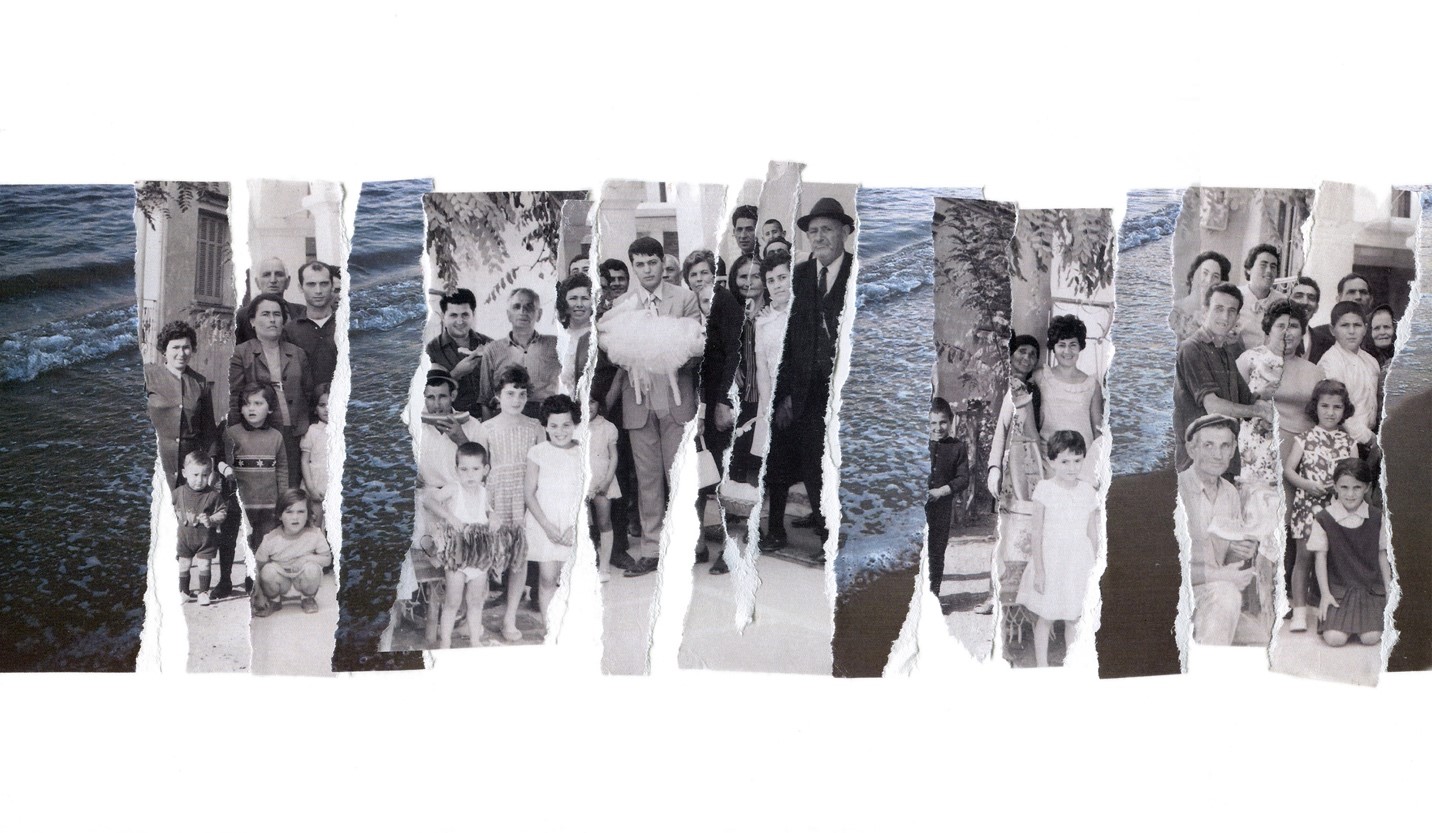Anthoula Lelekidis is a first-generation Greek-American lens-based artist who works with photography, photographic collage, and mixed media who practices in New York. Her work navigates themes of personal memory, loss, migration, and the inability to create new memories. With a deep interest in the concept of the physical archive, Lelekidis alters found family photos to explore and interpret a deeper tie to her personal heritage and uncovers ancestral roots within the blank spaces of her recollection in the process.
Lelekidis holds a BFA in Photography from Parsons School of Design and received the Community Fellowship from the International Center of Photography for two years in a row, both in 2019 and 2020. She was an artist in residence at the Skopelos Foundation of the Arts in the summer of 2016 and earned a scholarship from the Students On Ice Organization to travel to photograph Antarctica in 2006.
It was wonderful getting in touch with Lelekidis and discussing more in-depth on her work and path so far. Her work, deeply intertwined with her heritage and her ancestors’ history and migration offers much food for thought as these are subjects ever relevant. Below, you will find our interview with the artist in full.
When did you start working on art?
I have been working as an artist since I was a teenager, after graduating from the Frank Sinatra School of the Arts as a Fine Arts major. During that time, I also attended the Teen Academy program at the International Center of Photography. This is where I was introduced to a community of photographers and educators that really inspired me. I fell in love with the photographic medium.
After that, I went on to receive a BFA in Photography from Parsons School of Design, where I also explored other printing mediums through printmaking classes including silk screening, lithography, and photo etching.

Tell me more about this recent body of work Fragments of Diaspora.
My most recent body of work, Fragments of Diaspora centers around themes of identity, migration, and the desire to uncover my own roots. As a first-generation Greek-American, I search for connections between my birthplace, New York City, and that of my ancestors, who originated in Greece and Asia Minor.
In my experience, the lives of people of the diaspora are filled with a constant sense of nostalgia, a deep yearning for home, and a need to create a life away from it. Some of the photos I utilize depict scenes of cultural traditions and family bonds, while others highlight feelings of displacement and isolation. These reconstructions begin to represent my journey through inter-generational narratives.
After reading Marianne Hirsch’s book, The Generation of Postmemory, the idea of ‘postmemory’ became a great inspiration to me. In this text, the term ‘postmemory’ explains the relationship that the ‘generation after’ has to the collective and cultural trauma of those who preceded them. My intimate investigation and need for an individualized story, act as a meditation between the realm of postmemory and realization.

Both Greece and Asia Minor carry strong historical pasts. When you mention “collective and cultural trauma” I can’t help but consider the particularly recent and traumatic history of the Greek population of Asia Minor. I have seen it influence the work of other artists with the same heritage…it really strikes a chord. Do you feel your work can play a part in maintaining memory as much as offering some form of healing for older generations as well as those following?
As a decedent of Pontic Greeks from both of my parent’s sides, I feel a deep connection to the history of the Greek population of Asia Minor. It is a history I grew up with, having all four of my grandparents speak only in Pontic Greek while growing up, I can say I learned of the Pontic dialect, even before I learned Greek. Unfortunately, this dialect is slowly becoming a lost language, since many of the more recent generations are not able to speak it. Many of my childhood memories in Greece revolve around hearing my cousin play the lyra while watching my family dance in our front yard, or the smell of fried Piroshki coming from my grandmother Anthoula’s kitchen. I will never forget the stories about my great-grandfathers, who were born in Asia Minor, then fled to Russia in the 1920s to escape the war. There, my grandfathers grew up as refuges and later traveled back to Piraeus, Greece in the 1940s. I wish to incorporate more of these rich narratives in future works to create a record of this specific and important time in history. By keeping these memories alive, I hope to pay homage to older generations and maintain a reference for the generations to come.
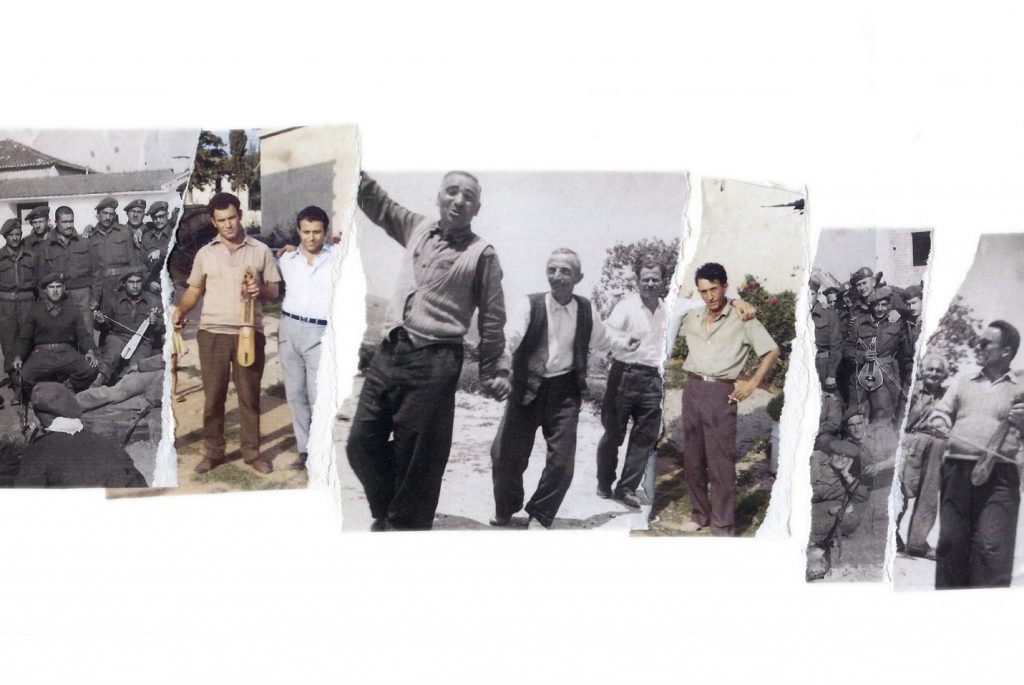
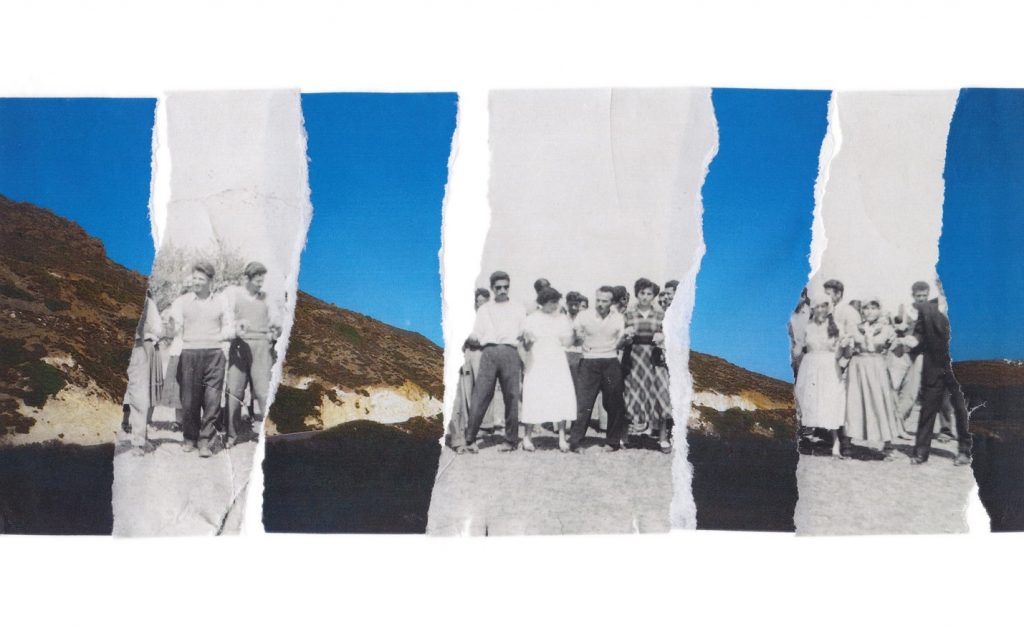
I love how you work between collage and photography. Would you like to elaborate more on your choice of medium?
I have always had an interest in family archives and believe these objects can be a rich source for storytelling. After collecting a wide range of photos from family albums, both in New York and Greece, I began to organize an archive of my own. Collage has become a process through which I create photographs without the use of a camera and it lends itself perfectly to the formal qualities found in everyday domestic photographs. The physicality of the technique stays true to the era that these photos were pulled from – the 1960s, 1970s and 1980s. Collage allows me to deconstruct and rejoin various moments of time, both literally and figuratively.
By combining fragments of my own photographs with personal family images, I reassemble a new collection of memories. My process is not controlled and is fairly intuitive. I look for similarities in facial expressions, gestures, body stance, and backgrounds. The detailed physical rips resemble the splitting of families who fled from their homeland due to war or poverty – a narrative similar to my family’s own, who fled to Greece during the Pontic genocide.
At the same time, there is a calm property to the tears, that doesn’t fully interrupt the overall composition and reflects my careful reprocessing of these family heirlooms. The mixture of found photos also touches upon the idea of fading and forgotten memories – those stories that were not passed down to me and cannot be completely illustrated.
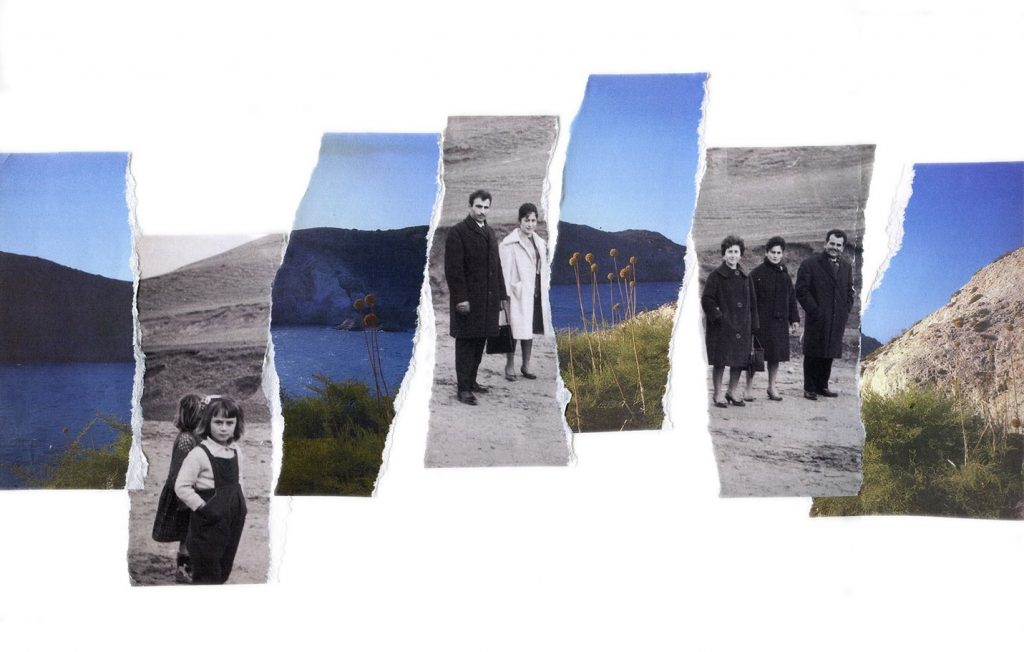
At the Foothills of Mount Olympus, Photo collage, 11 x 14 in., March 2020. Photo courtesy of the artist.
Yes, I must admit, what initially drew me to your work was it’s uncanny and unique way of bringing different points in time together.
Are these real, meaning original, treasured, photographs that you use for these works, or are they copies?
No they are not originals. They are prints made from the originals. Since I have become my family’s archivist, I feel a heavy sense of responsibility to keep the original photos safe. Most of the prints are one of a kind and not all of them belong to me. In some of the collages, I use the same photo multiple times – this wouldn’t be possible if I used the originals. Using photocopies also allows me to respond to the original works in ways that comment on the medium of photography as a whole, and its ability to replicate memories over and over again.
I must say, as a historian, I am relieved haha.. It is such a bold move to piece apart remnants of your past and put them back together again. More often than not, people treasure analogue photographs and keep them in boxes for years, even if never opening them to look at again. Was it an innate need that brought up your desire to work with these photographs so creatively?
Even though I don’t use the originals, I did have an innate need to rework them when I found them. So many of these everyday snapshots have incredible compositions and beautiful subject matter. Many of us in the art world wouldn’t constitute vernacular photography as art in the academic sense of the definition, but I truly disagree. There are so many brilliant artists within the domestic landscape of photography. By taking these photos out of these forgotten shoeboxes and dusty albums, I hope to keep custody and deep care of these personal inherited histories.
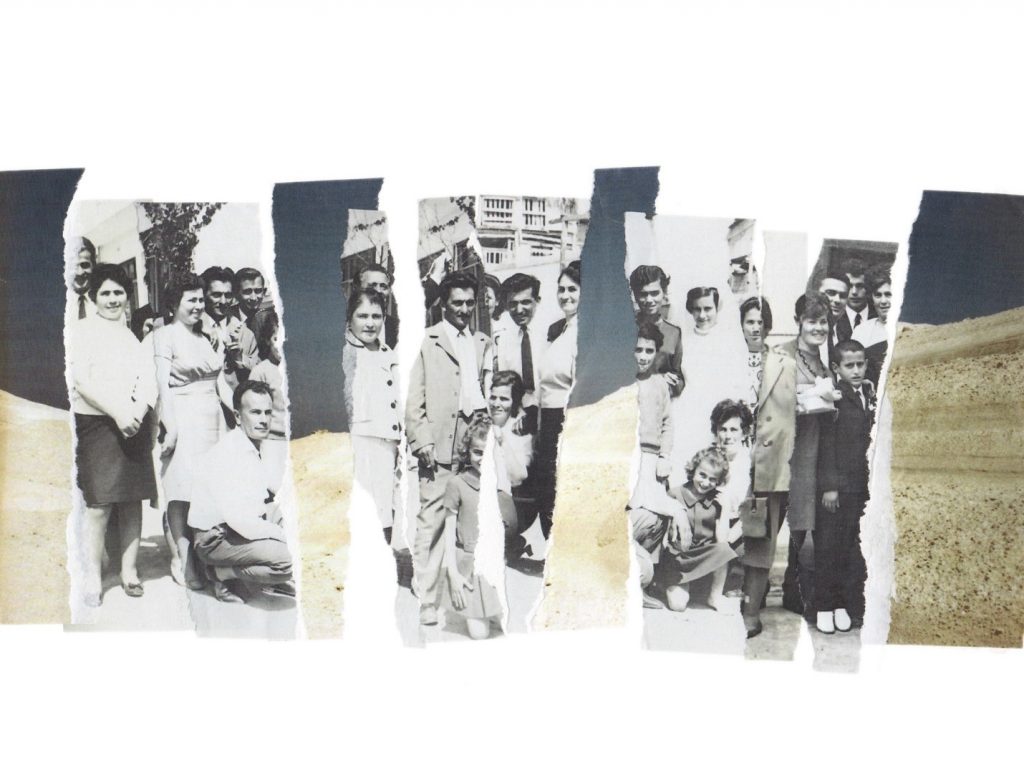
I truly agree with you – there is an immediacy accompanied by wonderful explorations through composition and use of light offered in photography! I believe the landscape is expanding more positively in this direction as of late.
Do you feel this body of work has given you an opportunity to reexamine your past, your history, and your memory, all elements so intricately tied to the formation of one’s identity?
This series has definitely pushed me to reform and reconstruct my past heritage to co-exist with my present identity. While creating this series, I began to uncover what truly makes me Greek-American. As a child of immigrants, I find it imperative to highlight certain signifiers of migration in the photos I select. In the Greek culture, these markers would look like the Lyra instrument, young men in army uniforms, red eggs during Easter, the blue Mediterranean landscape, or a solitary donkey standing in the countryside. In American culture, these signifiers would look like a yellow New York City taxi, a graffiti wall under the Hell Gate Bridge, a 1956 Chevy Camaro, or a snow day in Astoria Park. This family work is so deeply tied to the excavation and reformation of my existence. As a result of my research process, I’ve gained a new appreciation and respect for the legacy of my ancestors. Revisiting and filling in the gaps of one’s historic narratives is imperative to forming our identities.
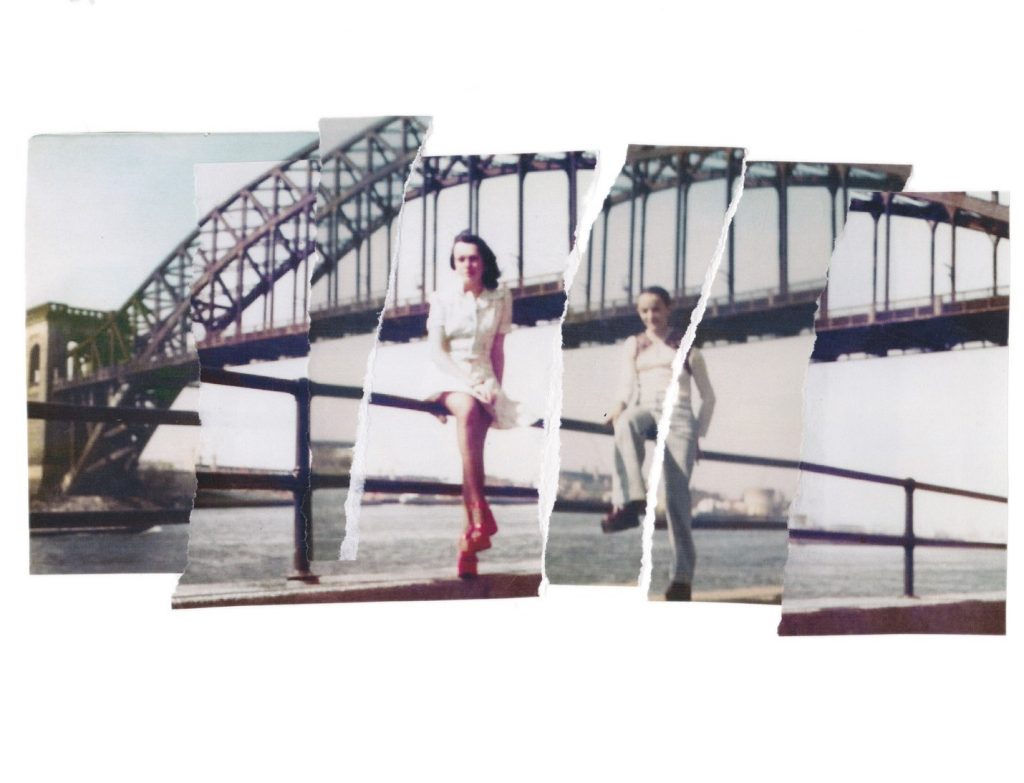
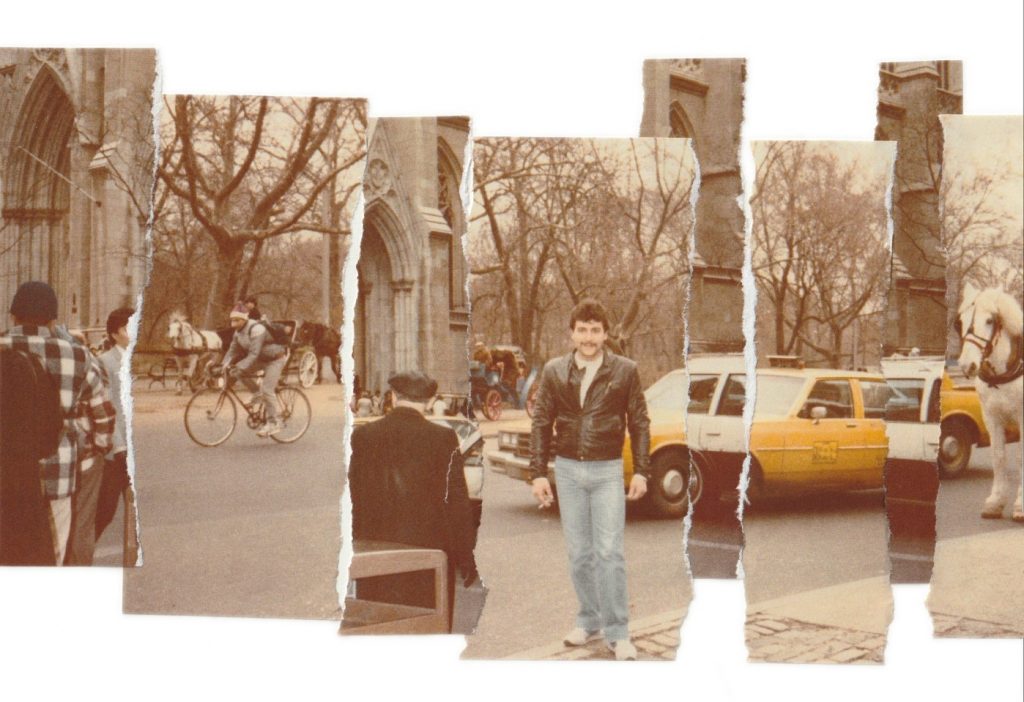
Fragments of Diaspora is really strong work particularly in how it appeals to the mind. Everyone has a past, and in New York especially, there is an enormous population that either is or comes from a family of migrants. The work, in fact, gives me, among other things, a similar shudder and awe as I felt when visiting the Tenement Museum, or listening to stories about my great grandfather who was the first-ever of my family to migrate to New York.
How do you feel about your work reaching out to people and making them ponder the past, whether their own or not?
It is so easy to connect with your story because my grandfather was the first to migrate to New York as well. My goal is to rebuild and resurface these generation stories, which in my opinion, are just as important as worldwide news. Telling someone’s story is a huge responsibility but I hope for people to recognize themselves in my work and connect to their own memories. Our family albums may seem different but can also be extremely similar. Most albums are filled with vernacular photographs that display similar moments: standing in front of a monument, relaxing at the beach on vacation, a family dinner group shot, a religious ceremony, or a child standing behind their cake at a birthday party. Historically, these were images for utility, not for aesthetics, yet they can be such a rich source of inspiration for work – whether it be visual art, writing, oral history, or scrapbooks. Many of our family albums are curated by a single person to show happy moments and usually don’t showcase tragedies within life. I hope to open up the privacy of family albums to the public and disrupt the original sequence.
That is beautifully said, and I, personally, greatly look forward to such work whenever it comes.
Are there any other bodies of works you would like to address?
A few years ago, I began a collective digital archive on Instagram titled Ancient Astoria. This page preserves the rapidly changing face of Astoria through family photographs and storytelling, while also facilitating conversations among the diverse residents of the neighborhood. Followers are able to submit their own family photos and are featured in the catalog.
Another body of work titled, A Rosebush and its Thorns, talks about absence, the impossibility of an earthly connection, and the meditations that surface after the loss of a loved one. I use found family images, my mother’s journal writings, image transfers, as well as my own photographs, to illustrate an intimate conversation with my mother. Almost 5 years after her sudden passing, I discovered a box of negatives I had misplaced. These images were found at a pivotal point in which I was trying to find a medium through which to process my grief. This series illustrates her short-lived voyage in fragments of a quiet transcendence beyond her daily struggles.
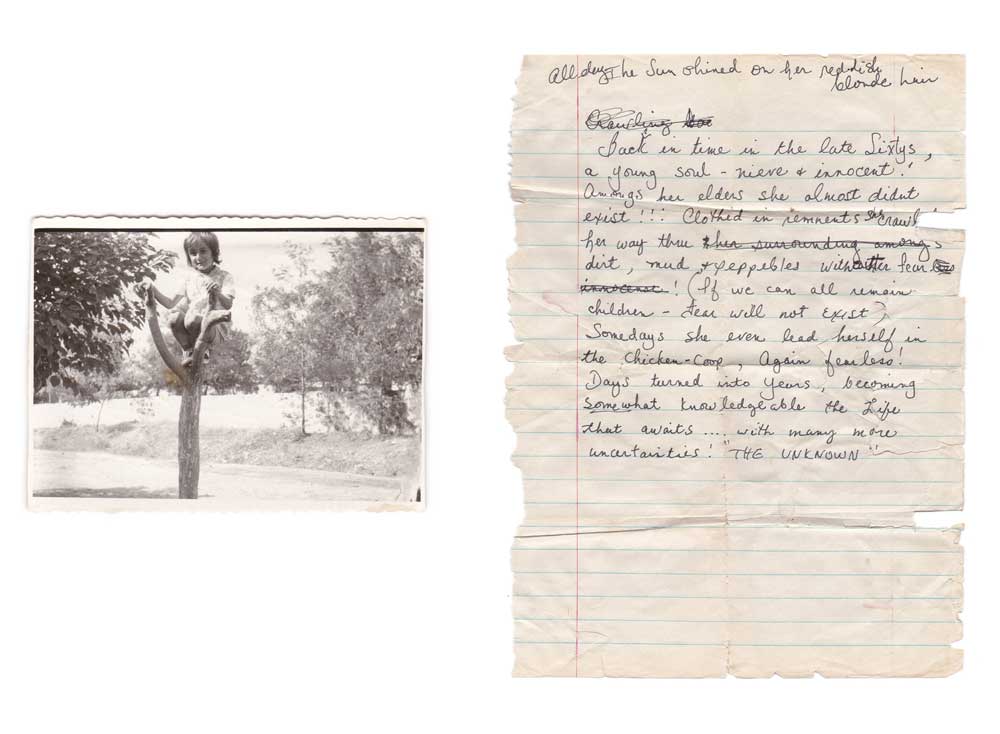
This is absolutely captivating – honestly. You have an incredible capacity for communicating past and present and I love how your work reaches beyond you and has the ability to connect with others.
Anything you are currently working on?
Another series I am currently working on is Matchbox Findings. After finding a box filled with my mother’s matchbook collection, I set out to find all the locations she once visited according to the locations sourced from the matchbooks. From restaurants and bars to nightclubs and hotels, this study led me to a route she once traveled in her youth. As my investigation continued, a sense of wonder and discovery connected me with her memory. Many locations have since closed down, while others remain open to stand as Manhattan landmarks. My aim is to reconstruct memories that occurred before my birth; to find out who my mother was before she became my mother.
What avenues do you look forward to exploring later on?
As my second and final year of my Community Fellowship at the International Center of Photography comes to an end this month, I am applying to several other artist residencies and grants. I am also interested in working more within the printmaking medium and hope to take some classes in the future.
I am also searching for a space to host a solo exhibition. The works in my series Fragments of Diaspora, serve mostly as mock-ups for future works, which I envision to scale up as large as 5 x 5 feet. These pieces would be printed on high-grade fiber-based photo paper which will allow for deeper details and the incorporation of printmaking techniques. When installed, other specific domestic objects will be incorporated to replicate the interior of a traditional Greek home including a Lyra instrument, a backgammon game board, and Komboloi.
I love this idea – exhibition that feels much like an immersive installation. Lucas Samaras’ recent show at Pace also included an installation wall covered with strands of beads and kompoloi and it had such a strong effect, it made the entire exhibition so much more immediate and intimate.
Are there any exciting projects you will be participating in in the near future that you would like to share (I always ask this though admittedly now is a tricky time period)?
A few different pieces from Fragments of Diaspora will be included in several upcoming online exhibitions, including 404 Gallery in Brooklyn. I am also working on putting together a small critique group that would meet every month, either virtually or in a physical space, to discuss works in progress, give feedback to each other, and share resources. In times like these, I think it’s imperative to maintain an artistic community and provide support for each other.
I completely agree with you and that is what I have been aiming for on peri-Tēchnes.
Thank you, Anthoula, so much for speaking with me about your path and your work. I really appreciate your time and look forward to projects we can collaborate on in the future!

